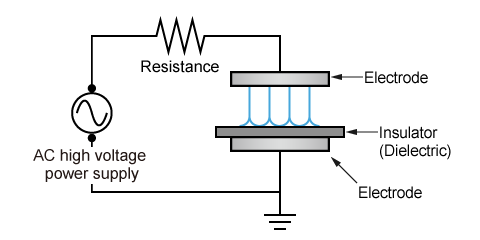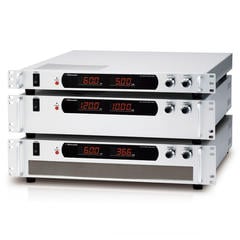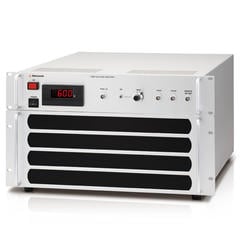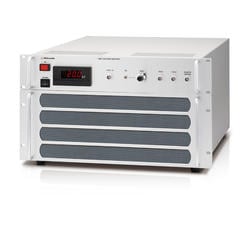Dielectric Barrier Discharge (DBD) is a discharge that occurs when an AC voltage is applied to one or both of the electrodes made of two metal plates and covered with an insulator. The insulator works in the same way as a capacitor. For this reason, insulators are also called dielectrics. Glass, alumina, and polymer films are used as dielectric materials. It is also possible to use water or electrolyte solutions as dielectrics.
In a dielectric barrier discharge, excessive and rapid discharge is suppressed by the insulator, resulting in a discharge that does not produce an arc (spark). This is why it is also called silent discharge. During the discharge, a purplish light-like plasma can be observed in the discharge area.
At this time, a charge is accumulated in the dielectric, similar to a capacitor. Therefore, when a voltage is applied in the opposite direction, discharge is possible at a lower voltage than the initial discharge. This makes it possible to generate a discharge with energy savings.
Dielectric barrier discharge is used in ozone generators, plasma displays, dielectric barrier discharge excimer lamps, and to decompose harmful exhaust gases such as NOx and SOx. Other technologies, such as the DBD-Plasma Actuator (DBD-PA), an actuator that controls the flow using a dielectric barrier discharge, are also being researched and developed.
Matsusada Precision handles high voltage amplifiers and other products enabling AC or pulse output for dielectric barrier discharge.

- Related words:
-
- Dielectric Barrier Discharge Plasma Actuator (DBD-PA)
- Electrode
- Insulator
- Discharge
- Pulse
Recommended products
Matsusada Precision handles high voltage amplifiers and other products enabling AC or pulse output for dielectric barrier discharge.






